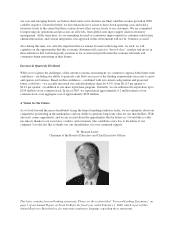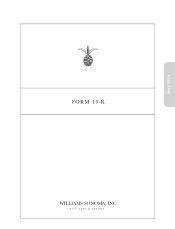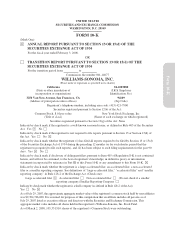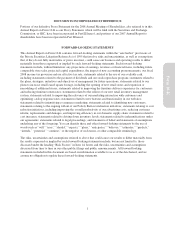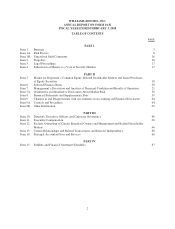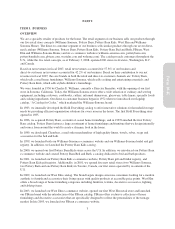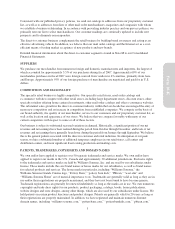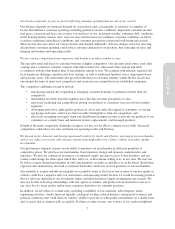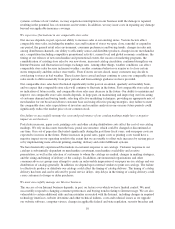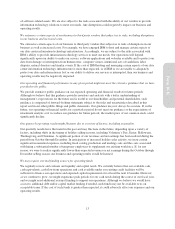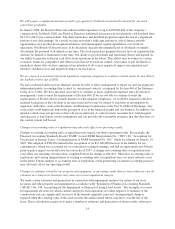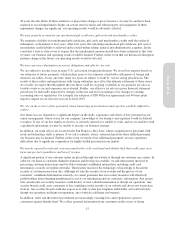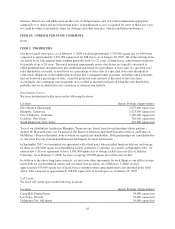Pottery Barn 2007 Annual Report Download - page 16
Download and view the complete annual report
Please find page 16 of the 2007 Pottery Barn annual report below. You can navigate through the pages in the report by either clicking on the pages listed below, or by using the keyword search tool below to find specific information within the annual report.
“westelm.com,” “wshome.com,” and “williams-sonomainc.com.” Collectively, the trademarks, copyrights, trade
dress rights and domain names that we hold are of material importance to us.
EMPLOYEES
As of February 3, 2008, we had approximately 39,000 employees, approximately 8,300 of whom were full-time
employees. During the fiscal 2007 peak season (defined as the period from October through December), we hired
approximately 16,500 temporary employees in our retail stores, call centers and distribution centers.
AVAILABLE INFORMATION
We file annual reports on Form 10-K, quarterly reports on Form 10-Q, current reports on Form 8-K, proxy and
information statements and amendments to reports filed or furnished pursuant to Sections 13(a), 14 and 15(d) of
the Securities Exchange Act of 1934, as amended. The public may read and copy these materials at the SEC’s
Public Reference Room at 100 F Street, N.E., Washington, D.C. 20549. The public may obtain information on
the operation of the Public Reference Room by calling the SEC at 1-800-SEC-0330. The SEC also maintains a
website at www.sec.gov that contains reports, proxy and information statements and other information regarding
Williams-Sonoma, Inc. and other companies that file materials with the SEC electronically. You may also obtain
copies of our annual reports, Forms 10-K, Forms 10-Q, Forms 8-K and proxy and information statements, free of
charge, on our website at www.williams-sonomainc.com.
ITEM 1A. RISK FACTORS
A description of the risks and uncertainties associated with our business is set forth below. You should carefully
consider such risks and uncertainties, together with the other information contained in this report and in our other
public filings. If any of such risks and uncertainties actually occurs, our business, financial condition or operating
results could differ materially from the plans, projections and other forward-looking statements included in the
section titled “Management’s Discussion and Analysis of Financial Condition and Results of Operations” and
elsewhere in this report and in our other public filings. In addition, if any of the following risks and uncertainties,
or if any other risks and uncertainties, actually occurs, our business, financial condition or operating results could
be harmed substantially, which could cause the market price of our stock to decline, perhaps significantly.
We must successfully identify and analyze factors affecting our business, anticipate changing consumer
preferences and buying trends, and manage our inventory commensurate with customer demand.
Our success depends, in large part, upon our ability to identify and analyze factors affecting our business and to
anticipate and respond in a timely manner to changing merchandise trends and customer demands. Consumer
preferences cannot be predicted with certainty and may change between selling seasons. Changes in customer
preferences and buying trends may also affect our brands differently. If we misjudge either the market for our
merchandise or our customers’ purchasing habits, our sales may decline significantly, and we may be required to
mark down certain products to sell the resulting excess inventory or to sell such inventory through our outlet
stores or other liquidation channels at prices which are significantly lower than our retail prices, either of which
would negatively impact our business and operating results.
In addition, we must manage our inventory effectively and commensurate with customer demand. Much of our
inventory is sourced from vendors located outside the United States. Thus, we usually must order merchandise,
and enter into contracts for the purchase and manufacture of such merchandise, up to twelve months in advance
of the applicable selling season and frequently before trends are known. The extended lead times for many of our
purchases may make it difficult for us to respond rapidly to new or changing trends. Our vendors may also not
have the capacity to handle our demands. In addition, the seasonal nature of the specialty home products business
requires us to carry a significant amount of inventory prior to peak selling season. As a result, we are vulnerable
to demand and pricing shifts and to misjudgments in the selection and timing of merchandise purchases. If we do
not accurately predict our customers’ preferences and acceptance levels of our products, our inventory levels will
not be appropriate, and our business and operating results may be negatively impacted.
6


